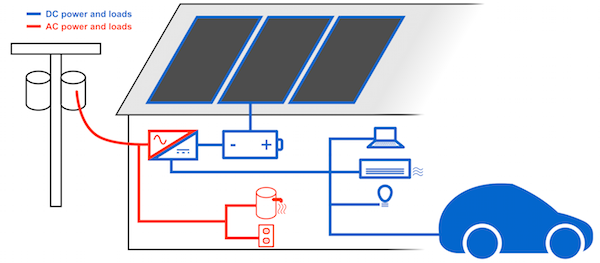DC Power Coming of Age
Alternating current (AC) continues to dominate electric power distribution both on the grid and inside buildings, but a look inside today’s buildings quickly casts doubt on the practicality of the AC power distribution paradigm. Direct current (DC) power—which lost out to AC in the early 20th century “war of currents”—has infiltrated the built environment. A variety of electric loads in the home—electronics, high-efficiency motors, and lighting—have steadily shifted toward DC power, tethered to AC power through power electronics that bridge the AC-DC divide. In the coming decades, the majority of electric end uses in homes will require DC power at their core to operate, and with the continued advance of distributed energy resources, many homes will also produce and store that energy locally and in its native DC form.
Unlocking the DC Opportunity
Significant energy savings, convenience, and resilience may be unlocked by adopting DC power distribution at the building level. In collaboration with the Collaborative Labeling and Appliance Standards Program (CLASP), Xergy has developed a white paper that charts a course through this transition by outlining several realistic adoption paths in residential buildings. We examine opportunities for introducing DC power in homes at scales ranging from individual circuits to the whole building and examine a host of other key questions, including:
- What range of energy savings can be expected under different DC system configurations?
- What are the most critical electrical end uses and distributed generation equipment to enable the envisioned adoption paths?
- What other sources of value beyond energy savings could motivate a transition to DC power delivery?
- What barriers exist to DC’s adoption, and how can policy and market transformation efforts help overcome them?
- What efforts are required to ensure that lighting, electronics, and appliances of the future are “DC ready”?
Join us in an evolving conversation on the future of electricity in the home. Demand DC: Accelerating the Adoption of DC in the Home, is available for download now through CLASP’s website.

